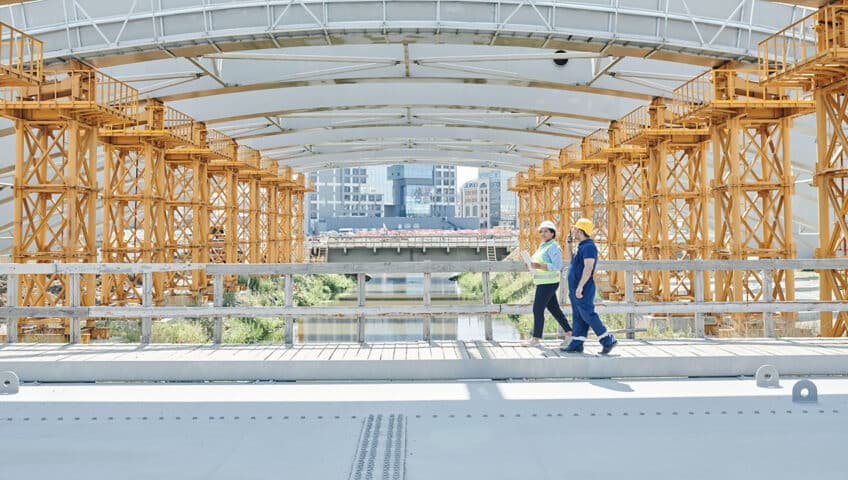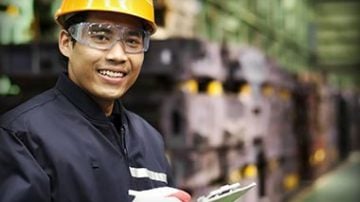The Future of Jobsite Safety
Technology across all industries and aspects of our lives continues to advance at a fast pace. New technological discoveries are fueling productivity and profitability for nearly all industries, especially the construction industry. Business growth is not the only positive impact in society’s tech advancement, employee safety and health is also improving. There are few main ways technology has contributed to better construction safety compliance including: digitization of process, virtual procedural training, utilization of smart data analytics and the incorporation of technology on the jobsite.
Digitization of Processes
Using technology to create digital, electronic safety processes is one way to boost safety awareness and nurture company safety culture. Construction companies of every size are moving away from paper based systems to electronic forms and databases. There are a variety of permits (PTWs) and process documents that are required for high risk tasks and construction work activities. These permits and processes are in place to ensure your company’s construction work project has been well planned out including risk evaluation and returning the job site to a safe state once the project is complete.
Smart systems, made possible by new technologies, improves this whole process from beginning to end. Electronic filing gives you greater visibility into potential errors, greater traceability with digital sign offs and the ability to authenticate employee qualifications.
Virtual Procedural Training
Safety training is vital to construction crews. Employees must be provided with the knowledge and skills they need to complete a job safely and efficiently. Training ensures your team has the tools they need to be successful. Virtual training and digital safety courses increase employee participation, expanding the number of job site workers who understand safety protocols.
Digitizing training materials also allows every construction employee access to crucial safety information at all times.
Utilization of Smart Data Analytics
Smart data analytics can be used to improve risk management across the board. Artificial intelligence is becoming a household name, commonly used for a variety of systems and processes to make our everyday lives better and easier. AI can be used to collect information, find patterns in data sets and predict different outcomes quickly and efficiently. From planning all the way through to completion, artificial intelligence and machine learning has a positive impact throughout a project's life cycle.
AI software can be used to analyze job site photographs in an effort to identify workplace risks and safety violations. It can also be used to review previous projects to determine if anything could have been more cost effective or more efficient.
Incorporating Technology on the Jobsite
Technology can also be incorporated in the work environment day in and day out. In the construction industry, employees and workers out in the field wear PPE or personal protective equipment to protect themselves and prevent potential injuries. This gear has evolved greatly over the years, becoming more comfortable, more efficient and more purposeful. Construction workers today have many options for high tech gear that protects them and promotes a safe job site.
High-Tech Wearable Gear
Wearable construction safety gear utilizing the latest technology can vary from a smartwatch that tracks specific variables in real time to a smart vest with airbags that provide cushioning in the event of an emergency.
Examples of high-tech wearable construction gear:
- Smart Helmets
- Bionic Suits
- Smart Sensors: Wristbands, badges, clip ons, biosensors
- Smart Suits
- Hard Hats with Optical Aids
High-Tech Handheld Equipment
In addition to wearable gear, technologically advanced handheld equipment can also be used on construction job sites to improve the safety of all workers. These tools can range from cordless hammer drills to flying drones used for safety inspections.
Examples of high-tech handheld construction gear:
- Single Battery Platforms
- Cordless Handheld Tools
- Jobsite Drones
- 3D Measuring & Scanning
- Tool Tracking Apps
Real time safety data from high tech construction equipment can allow a safety superintendent to identify a risky behavior or risky environment, the superintendent can engage the employee and others in a larger conversation about safety. Identifying the behavior is the biggest step in mitigating that potential risk.
Benefits of Construction Safety Technology
Technological advancements benefit every industry in one way or another. Some of the biggest breakthroughs in the medical and science fields have been made possible by technological developments. Health and sciences are not the only industries that have made life saving improvements with the assistance of technology. The construction industry has improved the safety and well being of their employees by implementing new technology across safety processes, digital training, data analytics, personal protective gear and handheld equipment. All of these contribute to a safer job site.
Additional Safety Compliance Benefits:
- Increased response times to potential injuries
- Decreased work hazards
- Identify and mitigate risky behavior
- Boost in employee morale
- Decrease insurance costs
- Increased job site productivity
Industrial Compliance & Safety takes pride in helping industry professionals improve their safety compliance measures while working to gain vital industry certifications. Learn how we can help by contacting our certification system experts today.
Ready To Get Compliant Today?
Call us or complete the form below!





